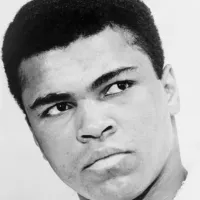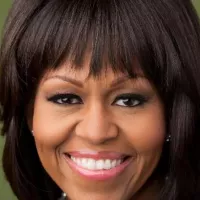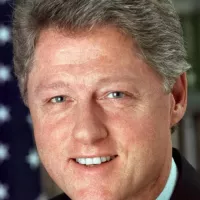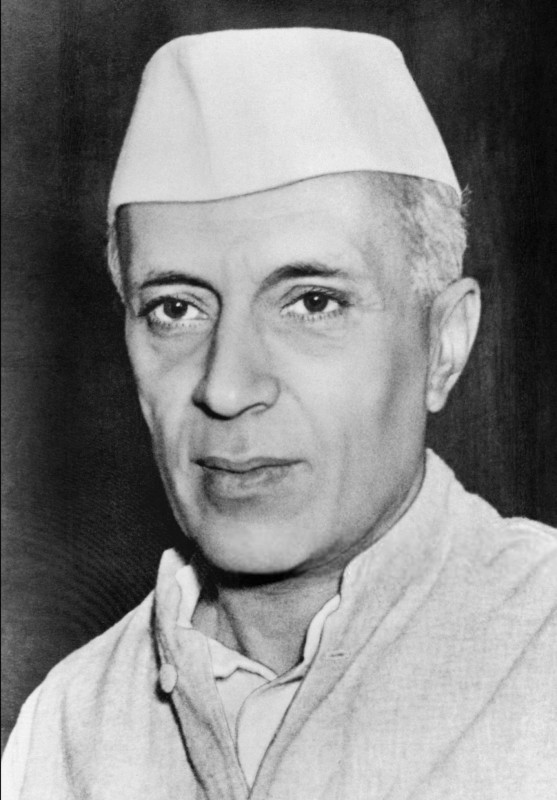Jawaharlal Nehru was the first Prime Minister of independent India and a central figure in the country's mid-20th century politics. A prominent anti-colonial nationalist, he advocated for secular humanism and social democracy. Nehru was also a writer, historian, lawyer, and statesman. His leadership shaped India's early post-independence trajectory.
1929: Emergence as Paramount Leader
Following the Lahore session of the Congress in 1929, Jawaharlal Nehru began to emerge as the most important leader of the Indian independence movement. Nehru had drafted the "Fundamental Rights and Economic Policy" resolution that set the government agenda for an independent India.
1929: Hoisting the Tricolour Flag and Pledge of Independence
On New Year's Eve 1929, Jawaharlal Nehru hoisted the tricolour flag of India on the banks of the Ravi in Lahore. A pledge of independence was read, including a readiness to withhold taxes, receiving approval from the public. 172 Indian legislators resigned in support. The Congress then called for observing January 26 as Independence Day, leading to flag hoisting across India and plans for civil disobedience.
April 1930: Arrest for Breach of Salt Law
In April 1930, Jawaharlal Nehru was arrested while traveling by train from Allahabad to Raipur for ceremoniously manufacturing contraband salt. Earlier he had addressed a huge meeting and led a vast procession. He was charged with breach of the salt law and sentenced to six months of imprisonment at Central Jail.
October 1930: Release and Re-arrest
On October 11, 1930, Jawaharlal Nehru's detention ended. However, he was back in jail in less than ten days for resuming the presidency of the banned Congress.
January 1931: Early Release from Prison
On January 26, 1931, Jawaharlal Nehru and other prisoners were released early by Lord Irwin, who was negotiating with Gandhi.
February 1931: Death of Motilal Nehru
On February 6, 1931, Nehru's father died.
December 1931: Imprisonment for "No-Rent" Campaign
On December 26, 1931, Jawaharlal Nehru was imprisoned again after violating court orders by leading a "no-rent" campaign in Allahabad to help alleviate peasant distress.
1931: Ratification of "Fundamental Rights and Economic Policy" resolution
In 1931, the "Fundamental Rights and Economic Policy" resolution that was drafted by Nehru was ratified at the Karachi session chaired by Vallabhbhai Patel.
August 1933: Release and Government's Intention to Re-detain
On August 30, 1933, Jawaharlal Nehru was released from prison, but the government soon moved to detain him again.
December 1933: Home Secretary's Memo
On December 22, 1933, the Home Secretary sent a memo to all local governments in India.
January 1934: Arrest in Allahabad
On January 12, 1934, Jawaharlal Nehru was arrested in Allahabad.
August 1934: Brief Release for Wife's Health
In August 1934, Jawaharlal Nehru was briefly released for eleven days to attend to his wife Kamala's ailing health.
September 1935: Kamala Nehru's Illness
In September 1935, Nehru's wife, Kamala, became terminally ill while receiving medical treatment in Badenweiler, Germany.
1935: Drafting the Election Manifesto
During the campaign, Nehru was elected to another term as Congress president. The election manifesto, drafted largely by Nehru, attacked both the Government of India Act and the Communal Award that went with it.
February 1936: Death of Kamala Nehru
On February 28, 1936, Nehru's wife Kamala died in a sanatorium in Lausanne, Switzerland.
March 1936: Return to India as Congress President
In March 1936, Jawaharlal Nehru returned to India after being elected as Congress president for the coming year, leading the Congress response to the Government of India Act 1935, which he condemned.
1937: Participation in Provincial Elections
In 1937, Nehru initially wanted to boycott the provincial elections but agreed to lead the election campaign after receiving assurances about abstentionism.
January 1938: Death of Nehru's mother
Jawaharlal Nehru was discontented with his role as Congress president, especially after the death of his mother in January 1938.
February 1938: Stepping down as Congress president
In February 1938, Jawaharlal Nehru did not stand for re-election as Congress president, and was succeeded by Subash Chandra Bose.
December 1938: Return to India and Acceptance to Head Planning Commission
After returning to India in December 1938, Jawaharlal Nehru accepted Bose's offer to head the Planning Commission.
February 1939: Presidency of AISPC
In February 1939, Jawaharlal Nehru became president of the All India States Peoples Conference (AISPC).
October 1939: Condemnation of Viceroy's Attitude and Call for Resignations
On October 23, 1939, the Congress condemned the Viceroy's attitude and called upon the Congress ministries in the various provinces to resign in protest. Before this announcement, Nehru urged Jinnah and the Muslim League to join the protest, but Jinnah declined.
March 1940: Pakistan Resolution
In March 1940, Muhammad Ali Jinnah passed the Pakistan Resolution, declaring that Muslims are a nation and must have their own state.
October 1940: Launch of Limited Civil Disobedience Campaign
In October 1940, Gandhi and Nehru launched a limited civil disobedience campaign in which leading advocates of Indian independence were selected to participate one by one.
October 1940: Dominion Status Offer
On October 8, 1940, Linlithgow offered Dominion status for India but referred neither to a date nor a method to accomplish this. It was also communicated that the British would not transfer power to a Congress-dominated government.
January 1941: Gandhi's statement on Nehru
On 15 January 1941, Gandhi made a statement about Nehru.
August 1942: Arrest Following Quit India Resolution
Following the Quit India resolution passed by the Congress party in Bombay on August 8, 1942, the entire Congress working committee, including Gandhi and Nehru, was arrested and imprisoned.
1942: Gandhi's Heir
Although Gandhi did not explicitly designate Nehru as his political heir until 1942, as early as the mid-1930s, the country saw Nehru as the natural successor to Gandhi.
1942: Cripps Mission and Failed Compromise
In 1942, with the Japanese threat growing, the British government sent Sir Stafford Cripps to India with settlement proposals. Nehru was hopeful for a compromise, but Gandhi opposed the proposals. Cripps' mission ultimately failed.
April 1943: Muslim League Captures Governments
In April 1943, while Congress leaders were imprisoned, the Muslim League captured the governments of Bengal and the North-West Frontier Province.
1943: Bengal famine
Much of the blame for the disastrous Bengal famine of 1943–44 during which two million died had been laid on the shoulders of the province's Muslim League government.
May 1944: Release of Gandhi
Gandhi had been released from prison on medical grounds in May 1944
1944: Waning Power of Jinnah
By 1944, Jinnah's power and prestige were waning.
June 1945: Release from Ahmednagar Fort
Most of the Congress working committee, including Nehru, Abdul Kalam Azad, and Sardar Patel, were incarcerated at the Ahmednagar Fort until June 15, 1945.
1946: Interim Government and Constituent Assembly
In 1946, Nehru and his colleagues were released and a plan led to elections to the provincial assemblies, who then elected members of the Constituent Assembly. Congress won the majority, and Nehru became prime minister of the interim government. The Muslim League joined the government later.
1947: Prime Minister of the Dominion of India
Nehru served as prime minister of the Dominion of India from 1947.
1950: Prime Minister of the Republic of India
Nehru served as prime minister of the Republic of India from 1950.
Mentioned in this timeline

Muhammad Ali nicknamed The Greatest was an iconic American professional...
India officially the Republic of India is located in South...
Germany officially the Federal Republic of Germany is a Western...

New Year's Eve observed on December st marks the final...
Pakistan officially the Islamic Republic of Pakistan is a South...

Trains are a connected series of vehicles traveling on railway...
Trending

23 minutes ago Kristin Cavallari Spotted Dating NBA Coach Will Hardy: A Nashville Romance?

23 minutes ago Study Suggests Kissing Originated 21 Million Years Ago, Even Before Humans Existed

23 minutes ago Jessie Diggins, US cross-country skiing icon, to retire after the upcoming season.

23 minutes ago Porsha Williams Involved in Delta Flight Incident; Bodycam Footage Released by Police

23 minutes ago FIFA Unveils 2026 World Cup Draw Seeds; Spain Tops Men's World Ranking.
24 minutes ago Aftyn Behn's Tennessee House Race: A Battle Riveting Democrats and Worrying Republicans.
Popular

XXXTentacion born Jahseh Dwayne Ricardo Onfroy was a controversial yet...

Cristiano Ronaldo often nicknamed CR is a Portuguese professional footballer...

William Franklin Graham III commonly known as Franklin Graham is...

Candace Owens is an American conservative political commentator and author...

Michelle Obama is an American attorney author and former First...

Bill Clinton the nd U S President - served as...
